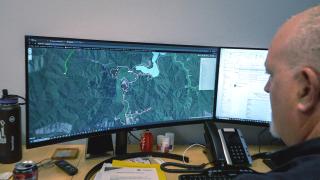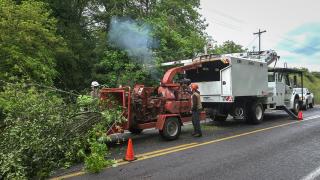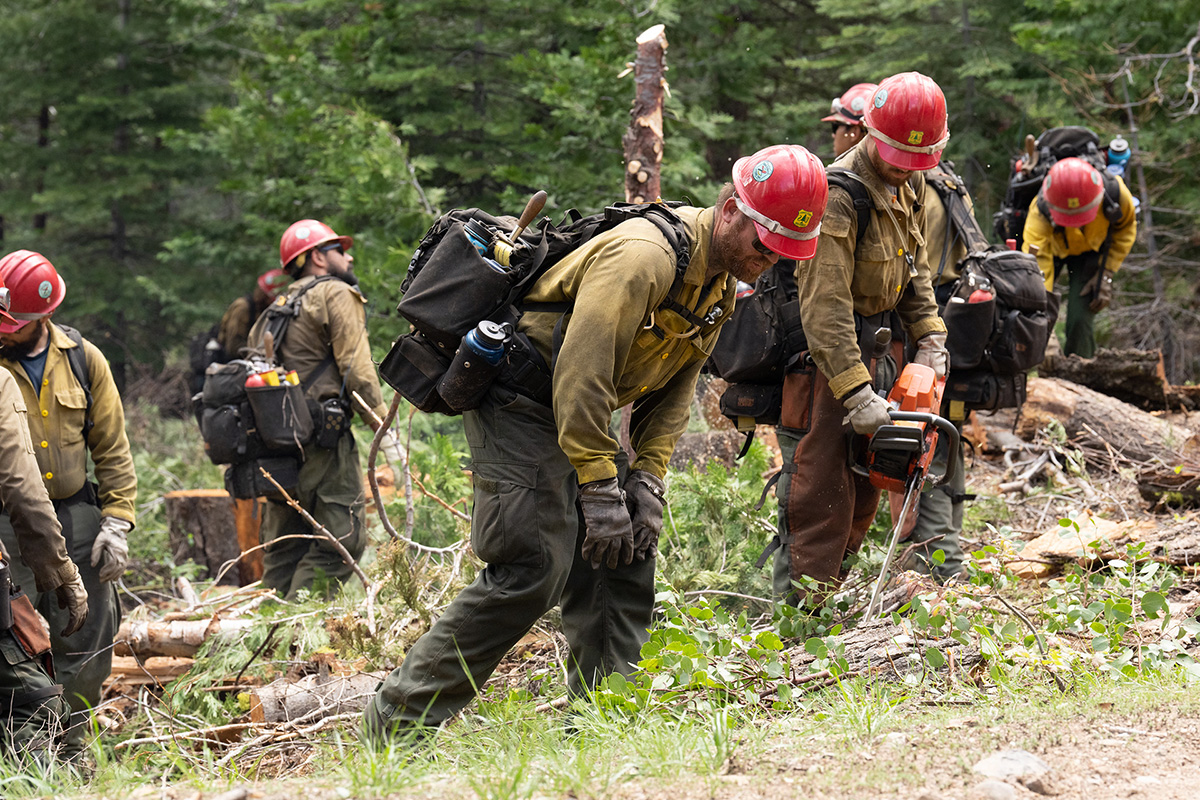Roseburg, Ore – Phil Bigler, the chief operating officer at Douglas Electric Cooperative, embodies the multifaceted role required to keep the lights on in rural America. From strategic planning and managing cybersecurity to hands-on tasks like unloading freight trucks and delivering pizza to linemen during outages, his commitment runs deep. Raised on tales of courageous linemen battling storms to serve their community, Bigler now finds a lot has changed since his grandfather worked for the same co-op.
“Electric utilities are better at everything than we were 80 years ago,” explained Bigler. “But the wildfire danger has increased dramatically. The environment has changed around us, and we now have fires that we never saw when I grew up in Oregon.”

Electric cooperatives first emerged after World War II to electrify rural areas neglected by traditional investor-owned utilities. As if that wasn’t challenging enough, Bigler says that today's challenges are starkly different. The surge in wildfire risks demands a delicate balance between providing reliable electric service and wildfire prevention.
Bigler's strategy hinges on proactive maintenance, particularly vegetation management along powerlines that cross a massive, 2,200 square mile service area in Douglas County, Oregon. However, the Douglas Electric Cooperative’s service area is 93% residential, meaning most of its revenue comes from regular households paying their monthly electric bill.

In Douglas County where much of the population’s income is below the federal poverty level, raising utility rates can worsen poverty and have big economic impacts across its rural communities. This makes it incredibly challenging for people like Bigler to fund expensive wildfire mitigation projects.
Enter a Community Wildfire Defense Grant from the U.S. Department of Agriculture’s Forest Service. When the co-op received the grant, it injected significant resources—$9.1 million—into Douglas Electric Cooperative’s wildfire preparation plan.
“Without the Forest Service funding, we would have had to take out a loan to pay for tree trimming and then pay back the loan by increasing utility rates,” Bigler emphasized.
Without this crucial funding, Bigler says the co-op would also have to do the work over a longer timeframe to keep costs low and avoid higher utility rates. The downside, though, is that these essential projects would take twice as long. And with wildfire risk increasing across Oregon, that is time they just don’t have.
With just over $9 million at their disposal, the cooperative is accelerating its vegetation trimming schedule and hazard tree removal. This critical work is mitigating wildfire threats across nearly 1,300 miles of their power lines.

“It’s like mowing the lawn,” described Bigler. “If you let it grow for a month, it’s three feet tall and takes a day to mow. But if you mow it once a week, it only takes a few minutes and you’re done.”
Ultimately, the savings afforded by the Community Wildfire Defense Grant can be passed on to customers in the form of lower rates. Beyond cost savings, the work prioritizes safety for both customers and firefighters.
Working around powerlines is one of the many hazards wildland firefighters face. Extreme heat and smoke can create a conductive path for electricity. The electrical current can arc to the ground endangering people nearby. Downed wires can also electrify fences, equipment or anything else that conducts electricity. In addition, powerlines are difficult for pilots to see, which increases the potential for aircraft accidents, some of which can be deadly. All these dangers underscore the important role electric utility companies play in keeping firefighters safe on the ground and in the air during a wildfire.
“We ask the incident management teams what they want us to do,” said Bigler. “We have employees right there at the fire camp ready to de-energize lines and make sure things are safe.”
Clearing utility corridors of dense vegetation can also lessen the fire’s impact on infrastructure like utility poles that prevent downed wires.

The human impact of reliable electricity becomes palpable during emergencies, as Bigler often witnesses firsthand. For many Douglas County residents, power outages aren't mere inconveniences but potential crises, risking vital food supplies and livelihoods. With assistance from the U.S. Forest Service, Bigler envisions a future where these hardships are minimized.
“We are all out here to make sure we have a reliable utility system in place, to make sure that when anyone needs to have the lights on, they can,” said Bigler.
The Community Wildfire Defense Program, funded by the Infrastructure Investment and Jobs Act, assists at-risk communities, including Tribal communities, with planning for and lowering wildfire risks on tribal, state, and privately managed land. The program comes at a time when the nation faces an ongoing wildfire crisis, and these grants support the Forest Service’s plan to confront the wildfire crisis across all lands.





